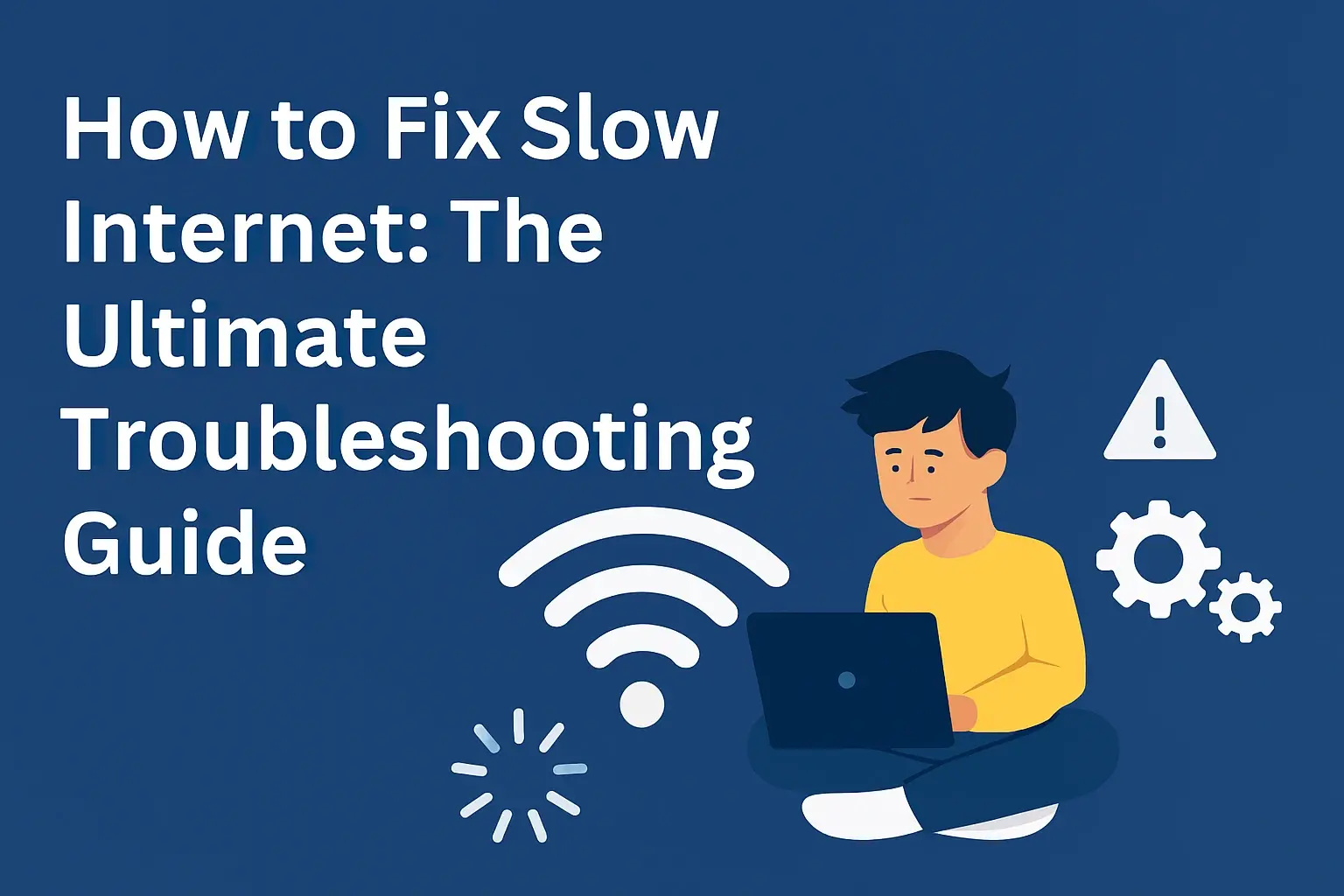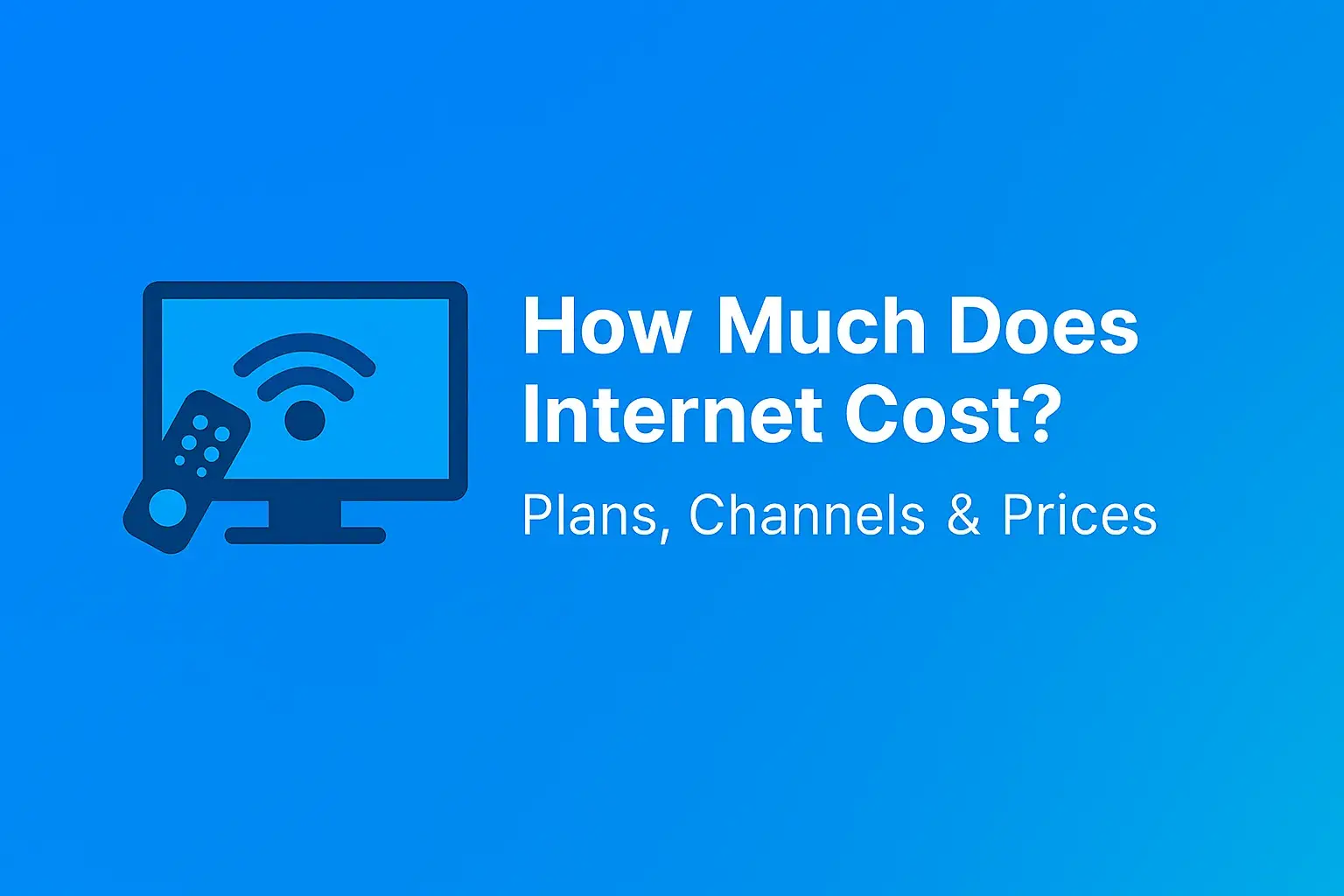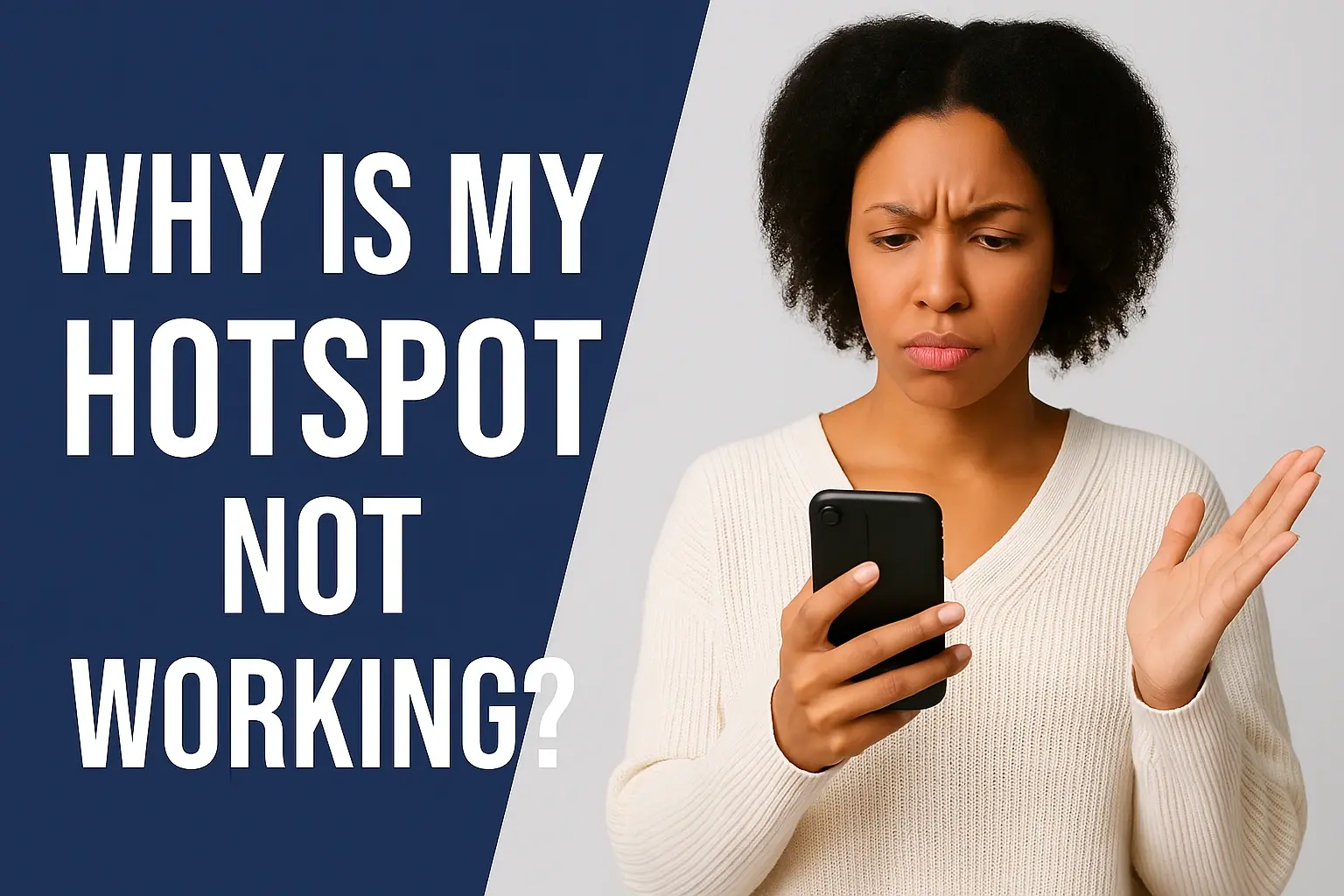Is it Cheaper to Bundle TV and Internet?

Bundling your TV and internet services often promises cost savings, but is it truly the most economical choice in 2025? This comprehensive guide dives deep into the economics of bundled packages versus separate subscriptions, equipping you with the knowledge to make the smartest decision for your household budget.
Understanding TV and Internet Bundles
In the competitive landscape of telecommunications, service providers frequently offer "bundles" – packages that combine two or more services, typically television and internet access, but sometimes including home phone or mobile plans. The primary marketing angle for these bundles is often cost savings. Consumers are presented with a single monthly bill and the promise of a lower overall expenditure compared to subscribing to each service individually. However, the reality of these savings can be nuanced and depends on a variety of factors, including your specific service needs, local provider availability, and current promotional offers. Understanding what constitutes a bundle and how providers structure these offers is the first step in determining if it's genuinely cheaper for you.
What Exactly is a Bundle?
At its core, a bundle is a promotional package designed to incentivize customers to consolidate their services with a single provider. The most common combination is internet and cable TV. However, providers are increasingly offering "triple-play" (internet, TV, phone) and even "quad-play" (internet, TV, phone, mobile) bundles. The appeal lies in simplicity and perceived savings. Instead of managing multiple bills from different companies, you receive one consolidated statement. This convenience, coupled with the provider's promise of a discount, makes bundles an attractive proposition for many households.
Types of Bundles Available
The variety of bundles can be extensive, catering to different consumer needs and budgets. Here's a breakdown of common types:
- Internet + TV Bundles: This is the most prevalent type. It typically includes a high-speed internet plan and a selection of cable TV channels. The internet speed and the TV channel package can vary significantly, from basic offerings to premium tiers.
- Internet + Phone Bundles: Often referred to as a "double-play," these bundles combine internet service with a traditional landline phone service. This is a good option for households that still rely on a landline or want to ensure reliable communication.
- Internet + TV + Phone Bundles (Triple-Play): These comprehensive packages offer the most convenience, bundling all three essential home communication services. They are often marketed as the most cost-effective option for a complete home connectivity solution.
- Bundles with Mobile Service (Quad-Play): Some providers are now integrating mobile phone plans into their bundles, creating "quad-play" offers. This is a newer trend and might be more prevalent with larger, national carriers.
- Streaming TV Bundles: With the rise of streaming, some providers are offering bundles that include high-speed internet paired with subscriptions to popular streaming services or their own proprietary streaming TV platforms.
The specific services included and their tiers (e.g., internet speed, number of TV channels, international calling plans) will dictate the overall price and value of any given bundle. It's crucial to look beyond the headline price and examine the details of what you're actually getting.
The Allure of Bundling: Why Providers Offer Them
Providers don't offer bundles out of sheer generosity; they are strategic business decisions designed to increase customer loyalty, reduce churn, and boost revenue. Understanding their motivations can help you negotiate better deals and assess the true value of their offers.
Customer Retention and Reduced Churn
The primary driver behind bundling is customer retention. When a customer subscribes to multiple services from a single provider, they are less likely to switch to a competitor. The inconvenience of transferring multiple services, potentially losing bundled discounts, and setting up new accounts with different providers acts as a significant barrier to switching. This increased stickiness translates into a more stable customer base and predictable revenue streams for the provider. For consumers, this means that while the initial offer might seem attractive, the long-term commitment could limit flexibility.
Increased Average Revenue Per User (ARPU)
Bundles are designed to increase the average revenue a provider generates from each customer. By encouraging customers to take on more services, even at a slightly discounted rate per service, the total monthly bill increases. For example, a customer might only want internet, but by bundling it with TV, the provider secures revenue from both. This strategy is particularly effective in markets where competition for individual services is fierce. The bundle becomes a way to upsell customers and maximize their spending with the company.
Operational Efficiencies
Consolidating services can also lead to operational efficiencies for providers. Managing a single customer account for multiple services can be more streamlined than managing separate accounts for each. This can include simplified billing, customer support, and installation processes. While these efficiencies might not directly translate into massive savings for the consumer in every case, they contribute to the provider's profitability, which can then be leveraged in their pricing strategies.
Competitive Advantage
In a saturated market, bundles serve as a key differentiator. Providers use them to stand out from competitors who might only offer individual services. By offering a comprehensive package, they aim to be a one-stop shop for consumers' communication needs. This can be particularly effective in areas where there are only a few major providers, allowing them to capture a larger market share through attractive bundled deals.
Cost Comparison: Bundled vs. Separate Services (2025 Data)
To determine if bundling is cheaper, we need to look at current market data for 2025. This involves comparing the typical costs of bundled packages against the aggregated costs of purchasing equivalent individual services from different providers. It's important to note that prices can vary significantly by location, provider, and the specific tiers of service chosen.
Average Costs in 2025
Based on industry reports and consumer surveys from early 2025, here's a general overview of average costs:
- High-Speed Internet: Basic plans (50-100 Mbps) can range from $50-$70 per month. Mid-tier plans (200-500 Mbps) often fall between $70-$100. High-end plans (1 Gbps and above) can be $100-$150+.
- Cable TV: Basic cable packages (limited channels) might start around $40-$60 per month. Mid-tier packages (more channels, some sports/premium) can be $70-$100. Premium packages with all sports, movies, and international channels can easily exceed $100-$150+.
- Home Phone: Basic landline service can be $20-$30 per month.
Now, let's look at how these might combine in bundled scenarios.
Bundled Package Examples (2025 Estimates)
It's challenging to provide exact figures due to the sheer variety, but here are illustrative examples:
Example 1: Basic Needs
Scenario: A household needing moderate internet speed (100 Mbps) and a basic TV package (around 100 channels).
| Service | Separate Cost (Estimated Monthly) | Bundled Cost (Estimated Monthly) |
|---|---|---|
| Internet (100 Mbps) | $60 | $100 - $120 (Bundle Price) |
| TV (Basic Package) | $50 | |
| Total Separate | $110 | N/A |
In this basic scenario, bundling could offer a saving of $10-$30 per month.
Example 2: Moderate to High Usage
Scenario: A household needing faster internet (400 Mbps) and a more comprehensive TV package (200+ channels, some sports). Home phone is also desired.
| Service | Separate Cost (Estimated Monthly) | Bundled Cost (Estimated Monthly) |
|---|---|---|
| Internet (400 Mbps) | $85 | $150 - $180 (Bundle Price) |
| TV (Mid-Tier Package) | $90 | |
| Phone (Basic) | $25 | |
| Total Separate | $200 | N/A |
For moderate to high usage, bundling could potentially save $20-$50 per month.
Example 3: Premium Needs
Scenario: A household requiring gigabit internet, a premium TV package (all sports, movies, international), and potentially a mobile line.
| Service | Separate Cost (Estimated Monthly) | Bundled Cost (Estimated Monthly) |
|---|---|---|
| Internet (1 Gbps) | $120 | $220 - $280 (Bundle Price) |
| TV (Premium Package) | $140 | |
| Phone (Unlimited) | $40 | |
| Total Separate | $300 | N/A |
In premium tiers, the savings from bundling can be more substantial, potentially $20-$80 per month or more, especially when including mobile.
The Caveat: Promotional Pricing vs. Regular Pricing
A critical factor is that many advertised bundle prices are introductory or promotional rates. These discounts often last for a limited period (e.g., 12-24 months) after which the price significantly increases to the provider's standard rate. It's essential to ask about and understand the regular pricing after the promotional period ends. Sometimes, the "bundled" price after the promotion is higher than what you might have paid for separate services from different providers.
Hidden Fees and Equipment Costs
Don't forget to factor in potential hidden fees. These can include:
- Installation fees
- Equipment rental fees (modem, router, cable boxes)
- Broadcast TV fees
- Regional sports fees
- Taxes
These fees can add $20-$50 or more to your monthly bill, whether bundled or not. However, sometimes providers offer free equipment rental or waived installation fees as part of a bundle promotion.
Factors Influencing Bundle Savings
The actual savings you experience from bundling aren't uniform. Several key factors determine whether a bundle is a good financial decision for your specific situation.
Provider Availability in Your Area
The most significant factor is which providers operate in your geographical location. If you only have one or two options for high-speed internet and one option for cable TV, your negotiating power is limited, and bundling might be your only way to access certain services or get a slightly better rate. In areas with robust competition (e.g., multiple fiber providers, cable companies, and satellite options), you have more freedom to mix and match services for potentially greater savings.
Your Specific Service Needs
Are you a light internet user who primarily browses the web and checks email, or do you stream 4K video, game online, and work from home with large file transfers? Similarly, do you watch a few local channels, or are you a sports fanatic who needs access to every premium sports network? Bundles are often structured with specific tiers of service. If a bundled package includes services you don't need (e.g., a premium TV package when you only watch a few channels), you might be paying for unused features, negating any potential savings. Conversely, if the bundle perfectly matches your needs, the savings can be substantial.
Promotional Offers and Contract Terms
As mentioned, introductory offers are a huge part of the bundling equation. Always clarify:
- The duration of the promotional price.
- The standard price after the promotion ends.
- Any contract length required for the bundle.
- Early termination fees (ETFs).
A bundle might seem cheaper for the first year, but if the price jumps significantly afterward, it might be more expensive than keeping separate services. Long-term contracts can also lock you into a service that no longer meets your needs or budget.
Negotiation Skills and Loyalty
Providers are often willing to negotiate, especially if you are a long-time customer or if you can demonstrate a better offer from a competitor. Bundles can sometimes be a starting point for negotiation. If you're considering switching, mentioning competitor offers can prompt your current provider to create a more attractive bundle or discount. Loyalty programs can also sometimes offer additional discounts on bundled services.
The Rise of Streaming Services
The proliferation of over-the-top (OTT) streaming services (Netflix, Hulu, Disney+, Max, etc.) has fundamentally changed the TV landscape. Many consumers are "cord-cutting" or "cord-shaving," opting for cheaper streaming alternatives instead of traditional cable TV. If you're in this category, a bundle that includes a large cable TV package might be inherently more expensive than you need. However, some providers are now offering bundles that include internet with subscriptions to popular streaming services, which could be a more attractive option for cord-cutters.
When Bundling Makes Sense
Despite the complexities, there are clear scenarios where bundling TV and internet services is a financially sound decision.
You Need All Services Included
If your household genuinely uses and benefits from all the services included in a bundle (e.g., high-speed internet, a robust TV package with channels you watch, and a reliable home phone line), then bundling is often the most straightforward way to get them at a competitive price. You're not paying for services you don't use, and you benefit from the provider's incentive to offer a package deal.
Significant Promotional Discounts are Available
When providers offer substantial discounts on their bundled packages, especially for new customers, it can be a compelling reason to bundle. If the promotional price is significantly lower than the combined cost of separate services, and you are comfortable with the provider and the terms (including the price after the promotion), it can be a smart move. Always compare the total cost over the contract term, not just the introductory monthly rate.
Limited Provider Competition
In areas with limited competition, bundling might be the only way to access a combination of services or to get a rate that is even remotely affordable. If you have only one or two options for internet and TV, a bundled package from the available provider might offer better value than trying to piece together services from different, less integrated providers (if that's even possible).
Convenience is a High Priority
For some, the convenience of a single bill, a single point of contact for customer service, and a single installation appointment outweighs potential marginal savings from separate services. If managing multiple accounts, bills, and support lines feels overwhelming, a bundle can simplify your life significantly. This convenience has a tangible value, even if it doesn't show up directly on the bill.
You're a New Customer Looking for a Complete Package
New customer promotions are often the most aggressive. If you're moving into a new home or setting up services for the first time, providers are eager to win your business. Bundles are frequently used as the primary vehicle for these acquisition offers. This can be an excellent opportunity to lock in a good rate for multiple services.
Bundles with Streaming Services Fit Your Habits
As mentioned, some providers are now bundling internet with popular streaming subscriptions. If your primary entertainment consumption is through services like Netflix, Hulu, or Max, and a provider offers a package that includes your internet needs and these streaming services at a discount, it could be a very cost-effective and convenient solution, especially compared to subscribing to each separately.
When Bundling Might Not Be Cheaper
Conversely, bundling isn't always the most economical choice. Several situations can make separate services a better financial decision.
You Only Need One Service
If you primarily need just high-speed internet and have no interest in traditional TV, bundling with a cable package is almost certainly going to be more expensive than a standalone internet plan. You'll be paying for channels you won't watch and potentially for a landline you don't use. Similarly, if you've completely "cut the cord" and rely solely on streaming services and perhaps over-the-air antennas, a bundle with cable TV is likely a waste of money.
You Can Get Better Deals Separately
In areas with high competition, it's sometimes possible to find individual service providers offering superior performance or lower prices than what's available in a bundle. For instance, a dedicated fiber internet provider might offer gigabit speeds for less than a bundled cable internet plan, and you could then pair that with a much cheaper streaming TV solution or an antenna.
You Need Specific Niche Services
If you require highly specialized internet speeds (e.g., extremely low latency for competitive gaming) or a very specific set of niche TV channels not typically found in standard bundles, you might find better options by subscribing to services individually from providers who specialize in those areas.
Promotional Pricing is Misleading or Too Short-Lived
If the promotional discount on a bundle is minimal, or if the price increase after the introductory period is steep, the long-term cost of a bundle can exceed the cost of separate services. Always calculate the total cost over the intended duration of your service. A bundle that saves you $10 a month for a year but then costs $30 more per month for the subsequent two years might not be a good deal.
You Value Flexibility and Avoid Long Contracts
Bundles often come with 12- or 24-month contracts. If you prefer the flexibility to switch providers or change your service package without incurring hefty early termination fees, then avoiding long-term bundled contracts might be preferable. Many standalone internet or streaming services offer month-to-month plans.
You Can Leverage Over-the-Air (OTA) Antennas and Streaming Apps
For many, a good OTA antenna can provide free access to local broadcast channels (ABC, CBS, NBC, FOX, PBS, etc.). Combined with a strong internet connection for streaming services, this can significantly reduce or eliminate the need for a traditional cable TV package, making standalone internet the more economical choice.
Equipment Rental Fees Add Up
While some bundles include free equipment, many do not. If you have to rent multiple cable boxes and a modem/router from the provider, these monthly fees can add up quickly, potentially negating the savings from the bundle itself. Compare these rental costs to the one-time purchase of your own compatible equipment (if allowed by the provider).
How to Find the Best Deal: A Step-by-Step Guide
Navigating the world of bundles and separate services requires a systematic approach. Follow these steps to ensure you're making the most informed decision for your budget in 2025.
Step 1: Assess Your Needs Honestly
Before you even look at prices, determine precisely what you need:
- Internet Speed: What download and upload speeds are essential for your daily activities (streaming, gaming, working from home, video calls)?
- TV Channels: Which specific channels or types of content (sports, movies, news, local) are must-haves? How many channels are sufficient?
- Home Phone: Do you still use a landline? What are your calling needs (local, long-distance, international)?
- Mobile: Are you looking to consolidate mobile service as well?
Be realistic. Don't overestimate your needs, as this will lead to paying for services you don't use.
Step 2: Research Local Provider Availability
Identify all the internet and TV providers that service your address. This includes:
- Cable companies
- Fiber optic providers
- DSL providers
- Satellite providers
- Fixed wireless providers
Websites like BroadbandNow, HighSpeedInternet.com, or even your local government's broadband map can be helpful resources.
Step 3: Get Quotes for Separate Services
Contact each relevant provider and get quotes for the individual services that meet your needs identified in Step 1. Pay close attention to:
- Advertised speeds/channel lineups
- Monthly price
- Contract length
- Equipment rental fees
- Installation fees
- Any other recurring fees
Keep a spreadsheet or a detailed list to compare easily.
Step 4: Research Bundled Offers
Visit the websites of major providers in your area and look for their bundle deals. Note down the details of any bundles that seem to align with your needs. Crucially, try to find out:
- The exact services included (speeds, channels, features).
- The promotional price and its duration.
- The standard price after the promotion ends.
- Contract terms and early termination fees.
- Any bundled equipment deals or fees.
Step 5: Compare Apples to Apples
This is the most critical step. Create a comparison table that outlines the total monthly cost for your desired services under both scenarios (separate vs. bundled) over a significant period (e.g., 1-3 years). Remember to include:
- Monthly service fees
- Equipment rental fees
- Any unavoidable recurring fees (e.g., broadcast fees)
- Factor in the price increase after promotional periods.
Consider the total cost over the contract term, not just the initial savings.
| Provider/Option | Service(s) | Speed/Tier | Monthly Cost (Year 1) | Monthly Cost (Year 2+) | Contract Term | Total Cost (2 Years) |
|---|---|---|---|---|---|---|
| Provider A (Separate Internet) | Internet | 300 Mbps | $70 | $70 | Month-to-Month | $1680 |
| Provider B (Separate TV) | TV | Basic + Sports | $80 | $80 | Month-to-Month | $1920 |
| Total Separate | Internet + TV | N/A | $150 | $150 | N/A | $3600 |
| Provider C (Bundle) | Internet + TV | 300 Mbps + Basic + Sports | $130 (Promo) | $170 (Standard) | 12 Months | $3480 |
Example comparison: In this hypothetical, the bundle is cheaper in Year 1 but more expensive in Year 2, making the 2-year total slightly lower for the bundle. However, the flexibility of separate services might be worth the extra cost for some.
Step 6: Negotiate!
Once you have your data, don't be afraid to negotiate. Call providers and mention competitor offers. Ask about:
- New customer discounts
- Bundled package discounts
- Waived fees (installation, equipment)
- Loyalty discounts
- Any available upgrades for the same price
Be polite but firm. If one provider isn't budging, move on to the next. Sometimes, the best deals are found by threatening to leave.
Step 7: Read the Fine Print
Before signing anything, read the entire contract and service agreement. Ensure you understand all terms, fees, and conditions. Confirm the pricing for the entire contract duration and understand how to cancel if necessary.
Alternatives to Traditional Bundling
The landscape of home entertainment and communication is evolving rapidly, offering alternatives that might be more cost-effective or better suited to modern consumer habits than traditional bundles.
Over-the-Air (OTA) Antennas
For access to local broadcast channels (news, major network shows), a digital OTA antenna is an excellent, one-time purchase solution. With the transition to digital broadcasting, modern antennas can pick up dozens of channels in high definition for free. This can significantly reduce or eliminate the need for a basic cable TV package.
Streaming TV Services (IPTV)
These services deliver live TV channels over the internet. Popular options in 2025 include:
- Sling TV: Offers customizable channel packages starting at lower price points, often with discounts for new subscribers.
- Hulu + Live TV: Combines live TV channels with Hulu's on-demand library.
- YouTube TV: Features a comprehensive lineup of live channels and unlimited cloud DVR storage.
- DirecTV Stream: Offers various packages, including some that mimic traditional satellite/cable channel lineups.
These services can be bundled with standalone internet service, often providing more flexibility and lower costs than traditional cable TV, especially if you can tailor the channel package to your specific viewing habits.
On-Demand Streaming Services
Services like Netflix, Max, Disney+, Amazon Prime Video, Apple TV+, and Peacock offer vast libraries of movies, TV shows, and original content. While not live TV, they are the primary source of entertainment for many households. If your viewing habits are primarily on-demand, subscribing to a few of these services can be significantly cheaper than a full cable package.
Bundling Internet with Mobile and Streaming
Some providers are now offering bundles that combine high-speed internet with mobile phone plans and subscriptions to popular streaming services. These "new-age" bundles can be very attractive if they align with your current service usage and offer a genuine discount compared to subscribing to each element separately.
Gigabit Internet + Smart Home Devices
For power users, investing in the fastest available internet (often fiber optic) and then utilizing smart home devices and apps for communication and entertainment can be a powerful alternative. This approach prioritizes a robust internet connection as the foundation for all your digital needs.
Making the Final Decision
Deciding whether to bundle TV and internet services in 2025 hinges on a careful, personalized analysis of your needs, local market conditions, and the specific offers presented by providers. There's no one-size-fits-all answer, but by following a structured approach, you can confidently determine the most cost-effective path for your household.
Key Takeaways for 2025
Bundling is often cheaper IF:
- You genuinely need and will use all the services included in the bundle.
- You can secure a significant promotional discount that outweighs the cost of separate services.
- Provider competition in your area is limited, making bundled deals your best option.
- Convenience of a single bill and provider is a high priority.
Bundling might NOT be cheaper IF:
- You only need internet and have "cut the cord" on traditional TV.
- You can find better deals on individual services due to high market competition.
- The promotional pricing is short-lived, and the standard price is excessive.
- You prefer flexibility and want to avoid long-term contracts.
- Your needs are very niche and not well-catered to by standard bundles.
Actionable Recommendation
Your mission is to become an informed consumer. Start by meticulously cataloging your current or desired service usage. Then, diligently research both bundled offers and the costs of acquiring equivalent services separately from different providers in your area. Use comparison tables to visualize the total cost over at least a 2-year period, factoring in all fees and post-promotional pricing. Don't hesitate to negotiate aggressively with providers, leveraging competitor offers to your advantage. If the numbers clearly show savings and the terms are acceptable, then bundling is likely the way to go. However, if separate services offer more value, flexibility, or a lower long-term cost, embrace those alternatives. By empowering yourself with information and a clear strategy, you can ensure that your TV and internet expenses are as lean as possible in 2025.





